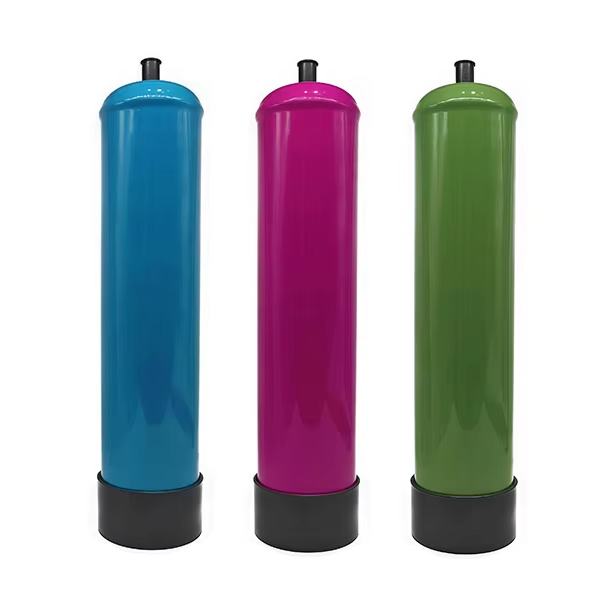Why Choosing the Right Whipped Cream Canister Matters
In both home kitchens and bustling commercial cafés across the USA, whipped cream remains a popular finishing touch on everything from lattes to gourmet desserts. But how you prepare this delicate topping makes all the difference — enter the whipped cream canister. Whether for daily indulgence or large-scale use in your business, choosing the best option is not just about aesthetics; it’s about quality output, usability, and long-term cost-efficiency.
These devices streamline what once could be a tiring kitchen task, turning what might take minutes of hand whisking into mere seconds with minimal effort and no messy cleanup involved. The right **whipped cream dispenser** allows you to create smooth, consistent foam every time while preserving texture for hours in the fridge or longer in a commercial setting.
The Key Factors To Consider Before Buying a Whipped Cream Dispenser
If you've never owned one, diving straight into purchasing can be a little overwhelming. To simplify your buying journey, here are **five key factors to keep in mind**: capacity and usage needs, material quality, dispensing mechanisms, pressure handling (N2O vs CO2 systems), and maintenance ease.
- Capacity Needs:
For casual at-home baristas, smaller canisters ranging between 0.5L to 1L will suffice. For restaurants, event caterers, and high-traffic cafes looking to meet customer demand, opting for a more substantial canister — up to 2L or more — becomes practical without sacrificing performance speed during peak times.
- Cleanliness and Hygiene Standards:
Dishwasher safe parts are ideal, especially if used multiple times a day. A design featuring fewer seams and easy access to valves reduces buildup over time. Commercial models sometimes feature commercial sanitizing certifications such as NSF International ratings for added assurance.
- Durable Materials:
Premium stainless steel can withstand constant pressure fluctuations and thermal shocks when kept cool after frequent refrigeration. While glass versions might look stylish, they carry the potential to break — especially under heavy usage environments.
- Safeguards Against Gas Leaks or Burst Issues:
Ensure units include safety features to avoid mishaps with N2O charging or incorrect sealing. Many top brands come backed with warranties that replace any defective unit due to accidental misuse — great peace of mind!
- Gasket and Valve Replacements Availability:
This applies even more so to professional kitchens. Opt for brands with easy accessibility for repair replacements so minor issues like leaky O rings don't stall production mid-day or force costly replacements each week.
"The best whipped cream dispensers do more than just foam up milk fast; they ensure durability, reliability, and restaurant-worthy outputs that delight users time and again," states renowned pastry chef Sarah Jenkins.
Types of Gases Used – What You Should Know About Nitrous & Carbon Dioxide Cartridges
The magic behind creamy foam comes down to gas. Nitrous oxide (**N2O**) cartridges are standard, offering excellent consistency and rich texture thanks to tiny bubbles dispersed through liquid creams. Conversely, **CO2-powered machines** are better suited for sparkling creations rather than classic whipping applications but remain popular in select culinary experiments today.
Nitrous Oxide (N₂O) Chargers: Pros and Considerations
Widely embraced by chefs and bar professionals, **nitrous oxide chargers**, often known commercially as “nangs" — short for “nitrous bags," though these slang forms rarely make sense unless referencing informal sources—offer an optimal method for foaming.
Pros of Nitrous Oxide:
- Lends itself exceptionally well to soft whip textures ideal for dolloping onto coffee, pancakes, berries.
- Cools ingredients slightly during activation helping maintain texture over extended cold storage durations.
- Acts as a mild natural preservative, extending refrigerated shelf life of dispensed contents beyond 24 hours when properly handled.
Potential Limitations or Warnings Around Misuse:
If left unchilled or agitated too forcefully upon shaking, nitrous cream might over-expand leading to loss of firm peaks. Never exceed recommended charger limits per model (some canister systems run optimally only on 1 or maximum two chargers per fill to ensure internal safety pressures aren’t crossed accidentally).
Browse Popular Options Among Home Chefs vs. Professional Settings
Top-Rated Canisters for Enthusiastic Home Users Across America
- Issi Premium Deluxe Stainless Steel Whip Cream Dispenser (1 Liter Size): Loved for its sleek brushed finish and sturdy chrome plating. Dishwasher friendly, ergonomic handle for easy squeezing and precise control, compatible with all standard-size nitrous oxide canisters in the U.S. Ideal starter tool.
- Aero Whipz Pro+ 600ml Electric Dispensing Model: An innovation in modern whipped solutions—comes equipped with built-in electric pumps for those seeking a cordless convenience without needing nitro refills constantly. Perfect for quick countertop setups without gas dependency.
Professional Picks for High-Demand Environments
- All-American CraftPro Heavy-Duty Commercial Nitro Whip System 500cc/800cc: Built for café and bakery professionals requiring rapid-fire outputs, double-walled insulated chamber to maintain chilled integrity longer post-discharge—favored in fine-dining establishments and food photographers who require perfect consistency every time, especially under timed scenarios or photo shoots.
- Hazan iChill Dual Temperature Smart Foam Unit: Offers programmable texture profiles—adjust foam lightness, thickness, or viscosity directly from touchscreen controls—a unique value add for mixologists or dessert artists aiming for precise layer textures in deconstructed desserts, layered cocktails alike.
Note: Check for regional regulations affecting bulk nitrous gas sales/purchases. In some U.S. counties, excessive retail ownership might violate minor consumption laws related to intoxicants derived synthetically like Laughing Gas abuse warnings found near campus shops etc.—always source from legal retailers with clear compliance disclosures upfront
Maintaining Your Whipping System Like an Expert - Care Routine Suggestions to Extend Lifespan & Quality Performance
Prioritize cleaning within two hours following use to eliminate residual dairy or fats that cling inside valves which later calcify and hinder smooth operation cycles down the line. Warm (never boiling or icy temps!) water rinse plus small brush cleaning should become part of daily hygiene ritual in bakeries or home settings using it frequently — weekly strip down including disassembly and inspection under sink tap pressure is good habit regardless of whether things seem 'working fine' externally at glance level!
- Check Seals Regularly
Gasket deterioration can lead to unexpected leakage during use, ruining presentation aesthetics or creating unsafe conditions via sudden release bursts from improperly sealed tops. - Routine Lubrication of Threads
(Only where applicable according to brand-specific guides). Some canisters allow light-grade edible lubricant (often included with initial kit) on threading area ensuring snug closure doesn't result in stripped threads over time despite repeated twists open/closed movement required in day-to-day operation. Always refer to your manual first before applying! - Purge All Leftover Content Post-Use
Avoid keeping leftover product stored inside for longer than 24 hours—unless clearly labeled “safe to preserve" within container manufacturer notes indicating approved sterilized vacuum sealed conditions exist to inhibit bacterial risk buildup over periods.
Beyond Maintenance: Storage Environment Conditions Also Count
To maximize operational longevity:
Store away from heat-intensive environments such direct sunlight, ovens/griddles nearby countertops in commercial spaces OR near hot pots/coffee makers in domestic areas unless protected by shielded counter shelves etc. Extreme exposure may cause warping in plastic or rubber seal areas overtime affecting tight-fitting caps from locking properly.
Additionally avoid moisture condensation accumulation in unused canisters by ensuring drying off fully before placing back in cabinet/drawer spaces.
By sticking religiously to these routines consistently—home cooks and professional pastry teams alike will enjoy years of silky, flawless foamed treats on demand!

